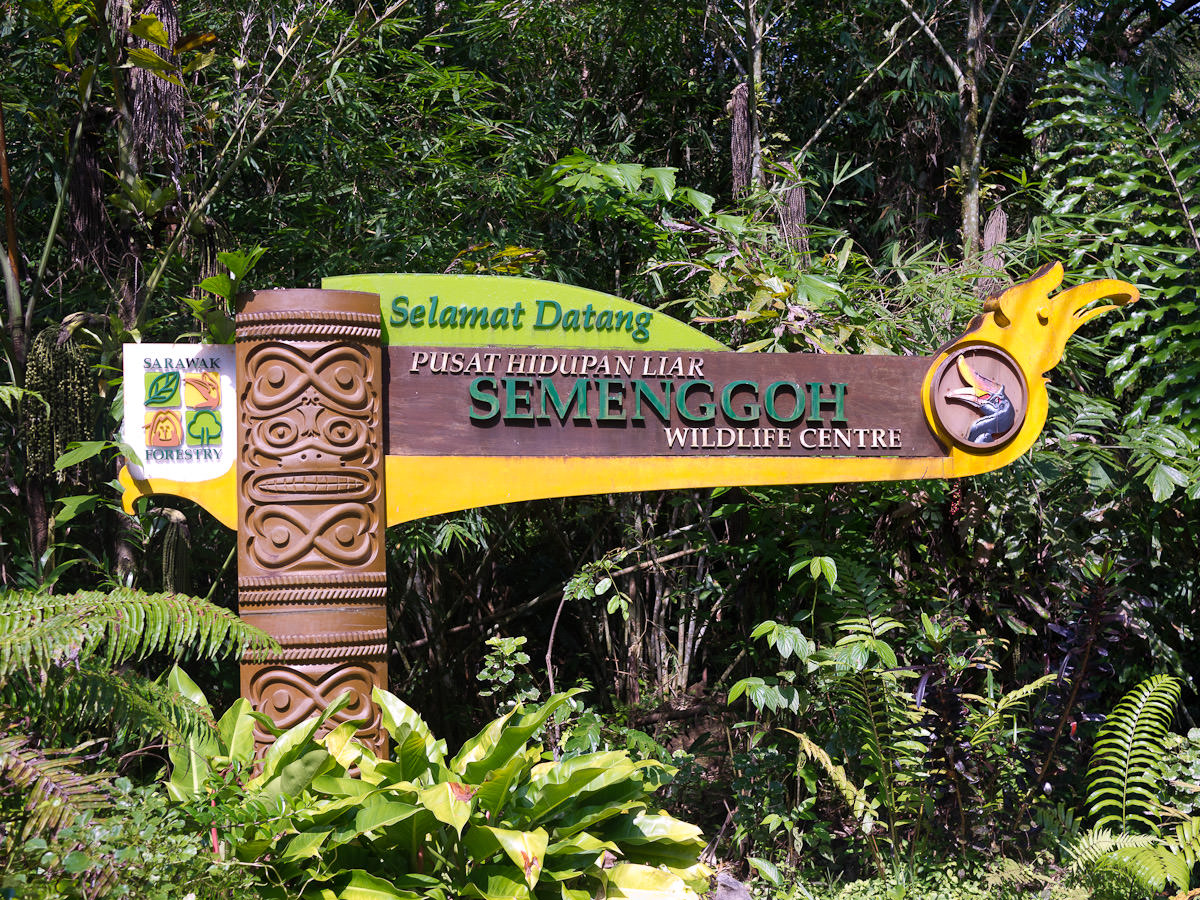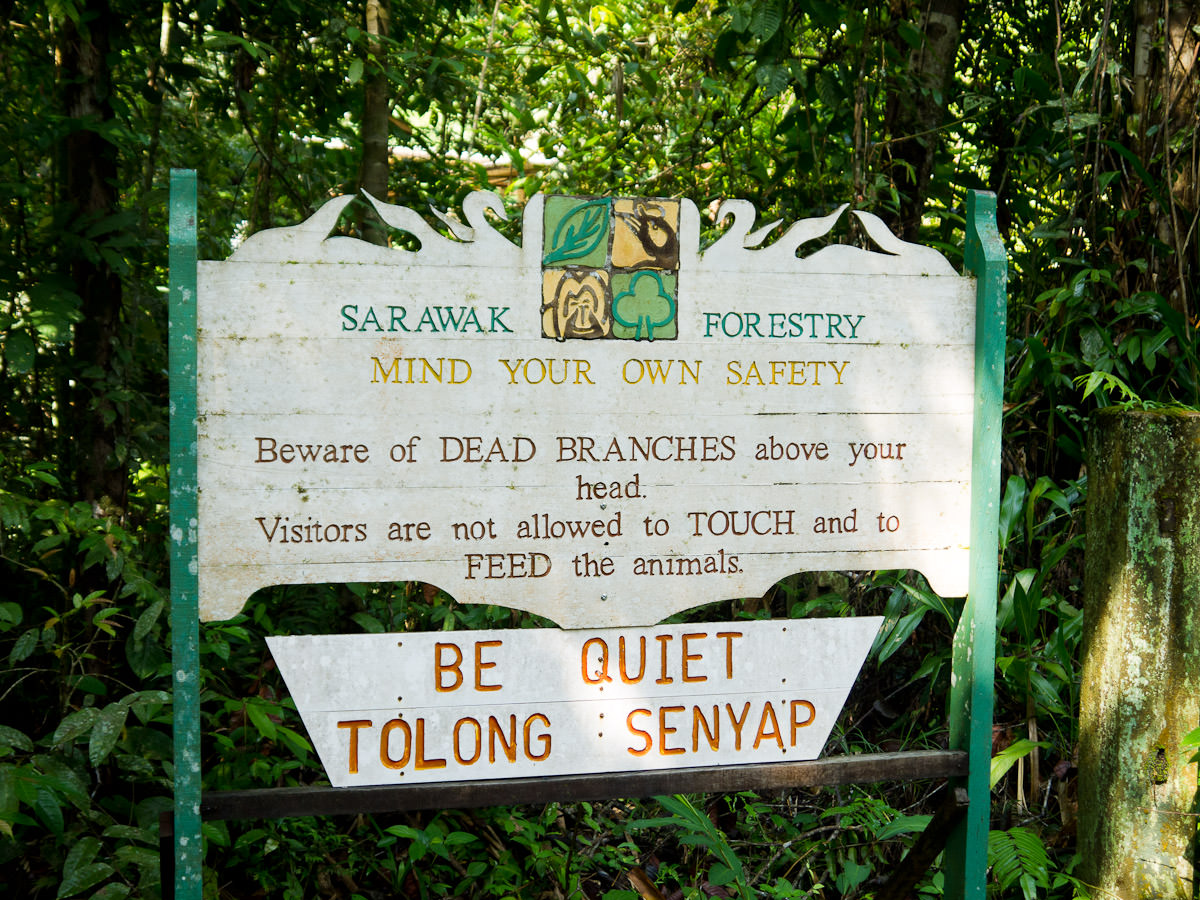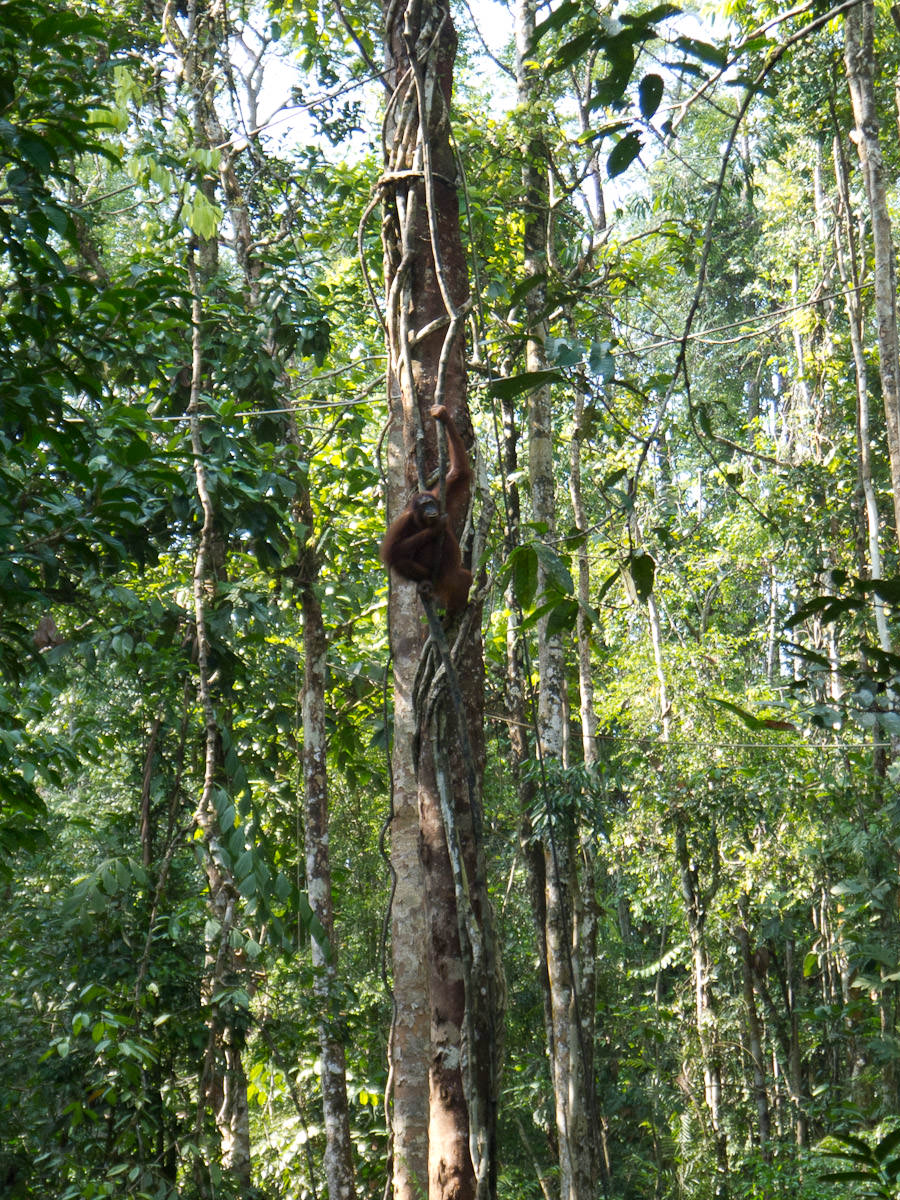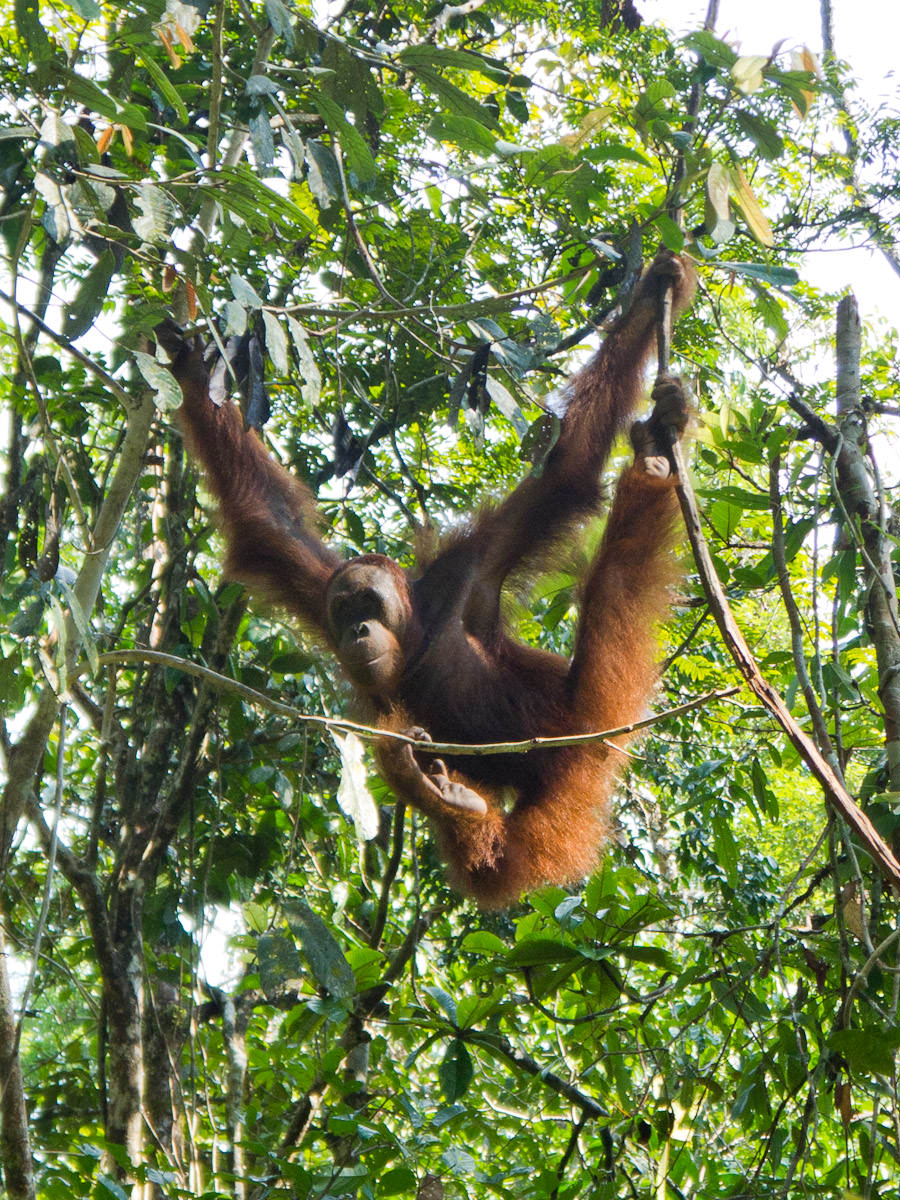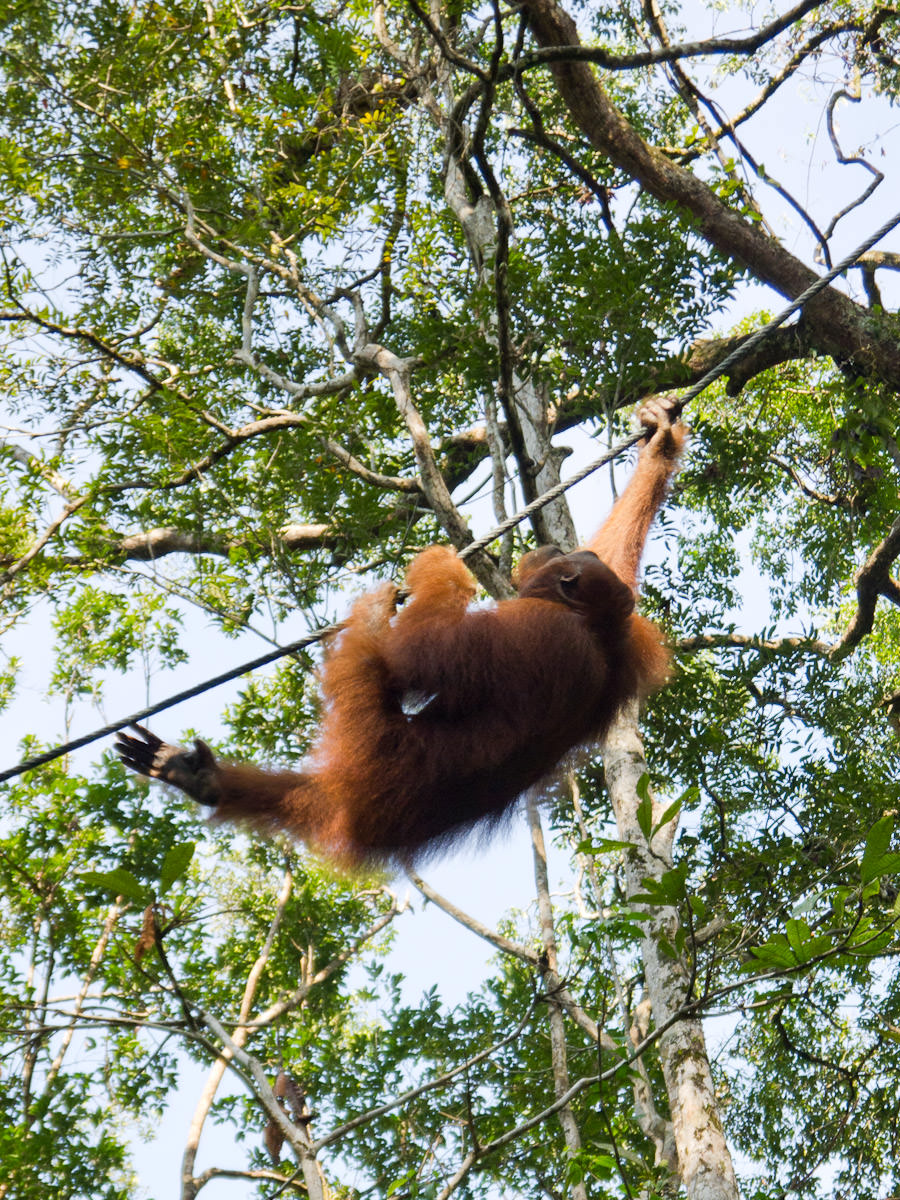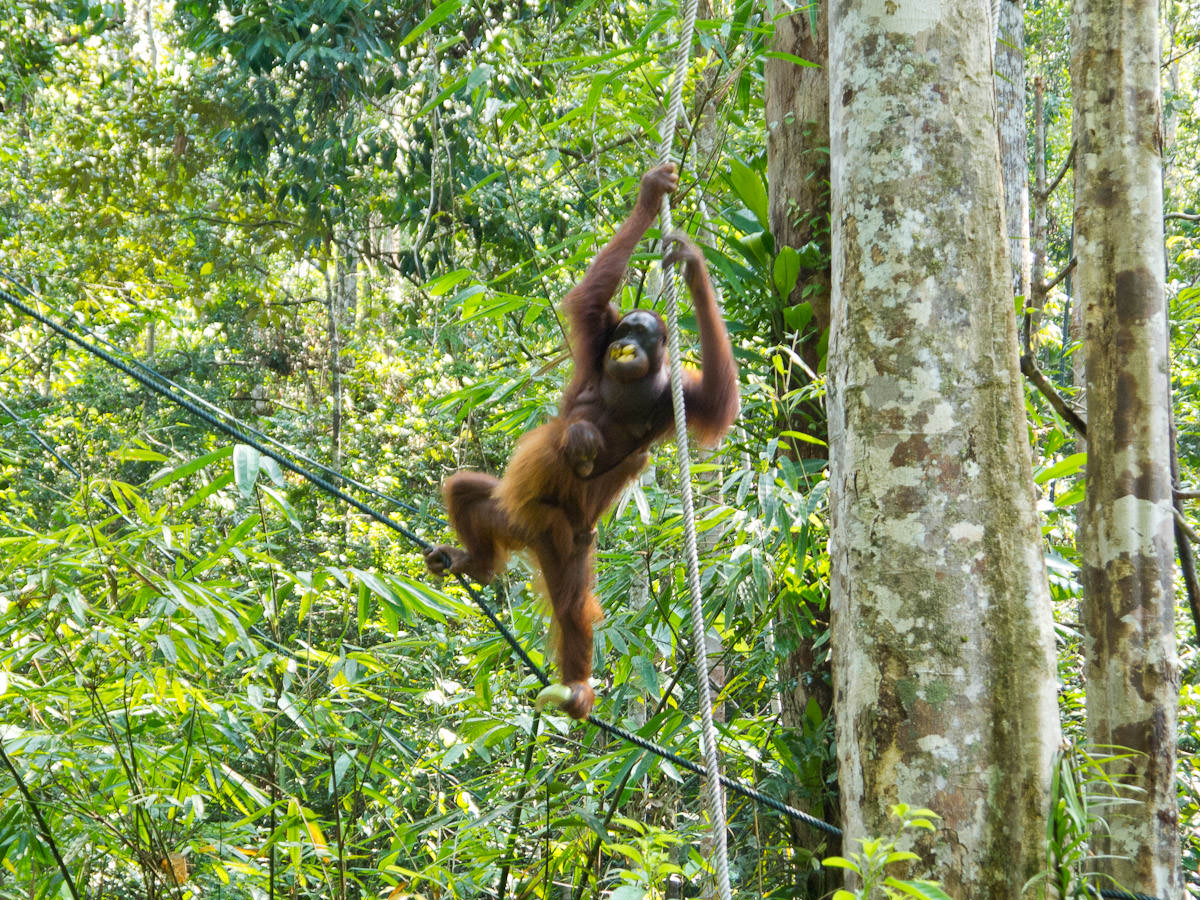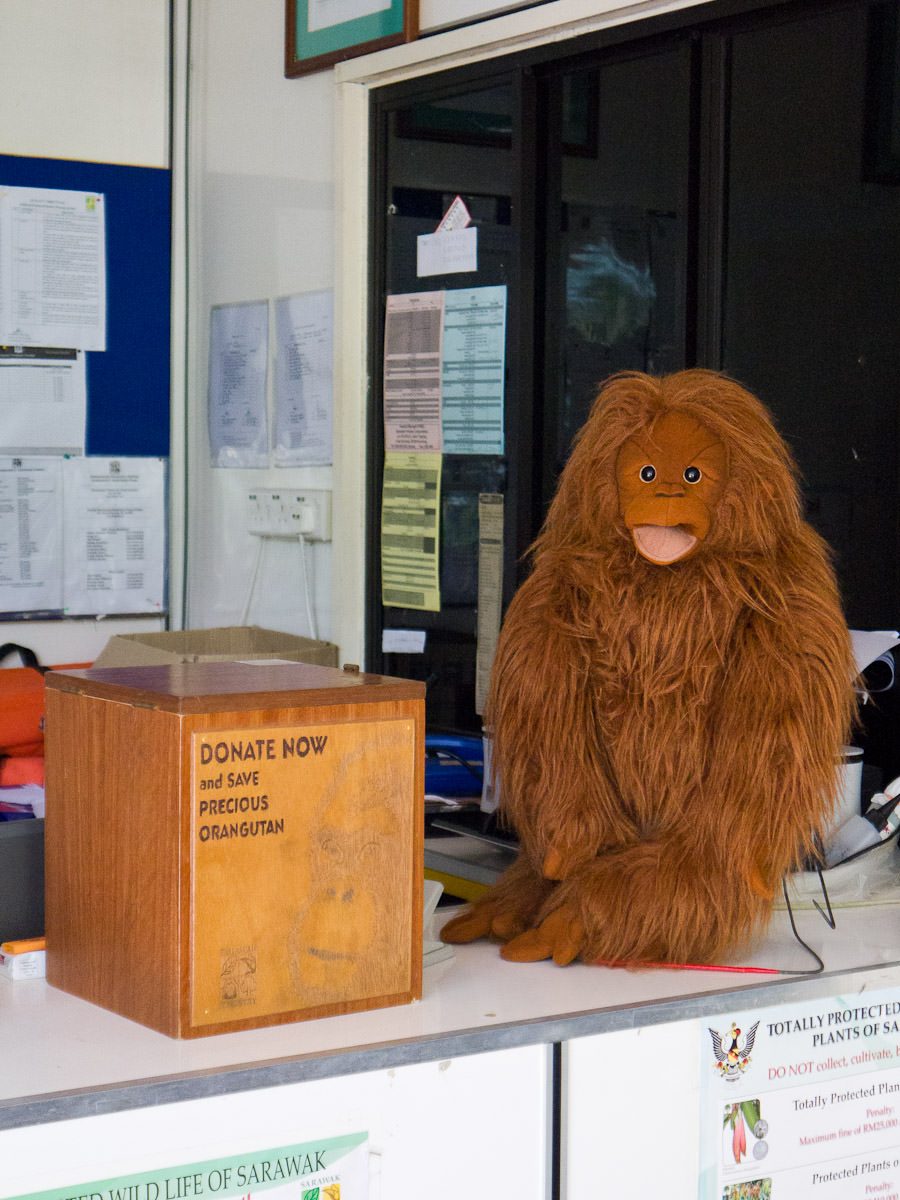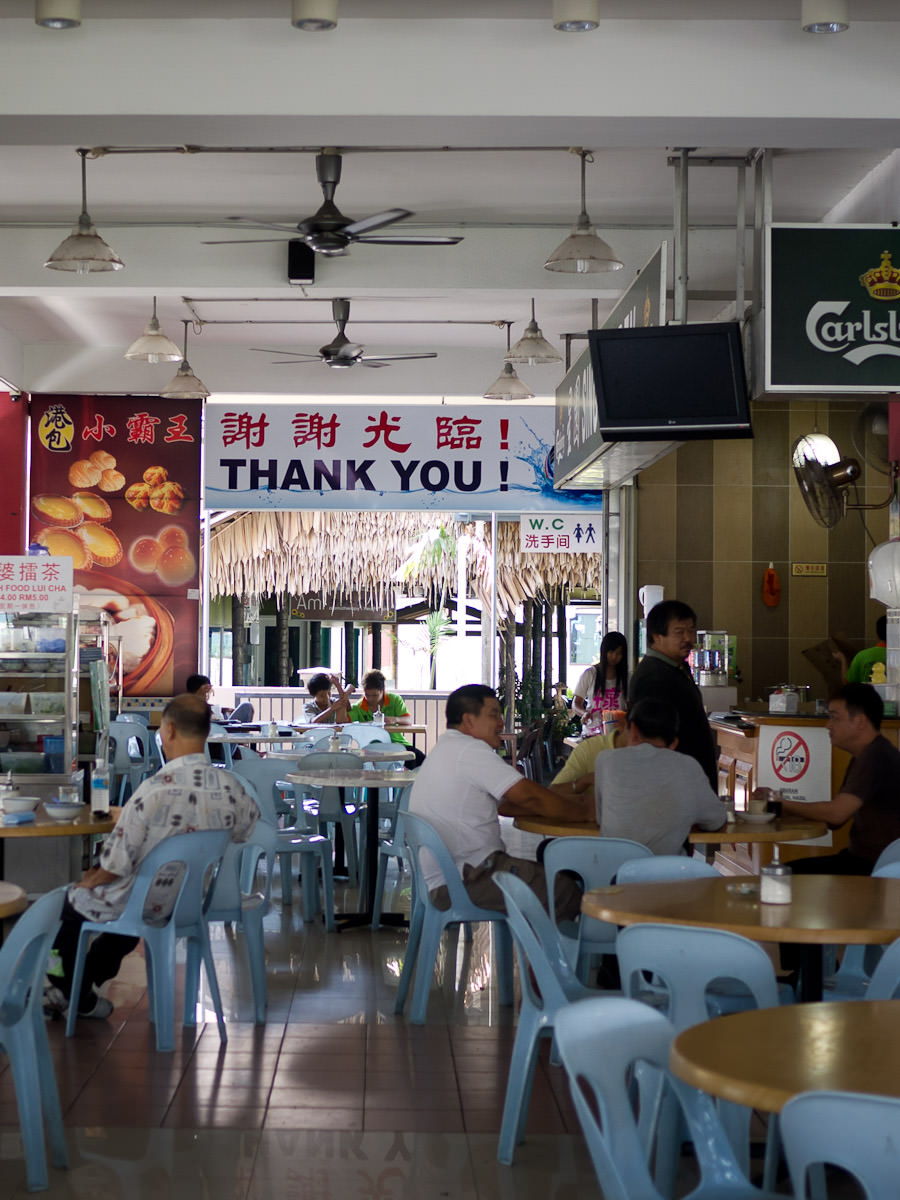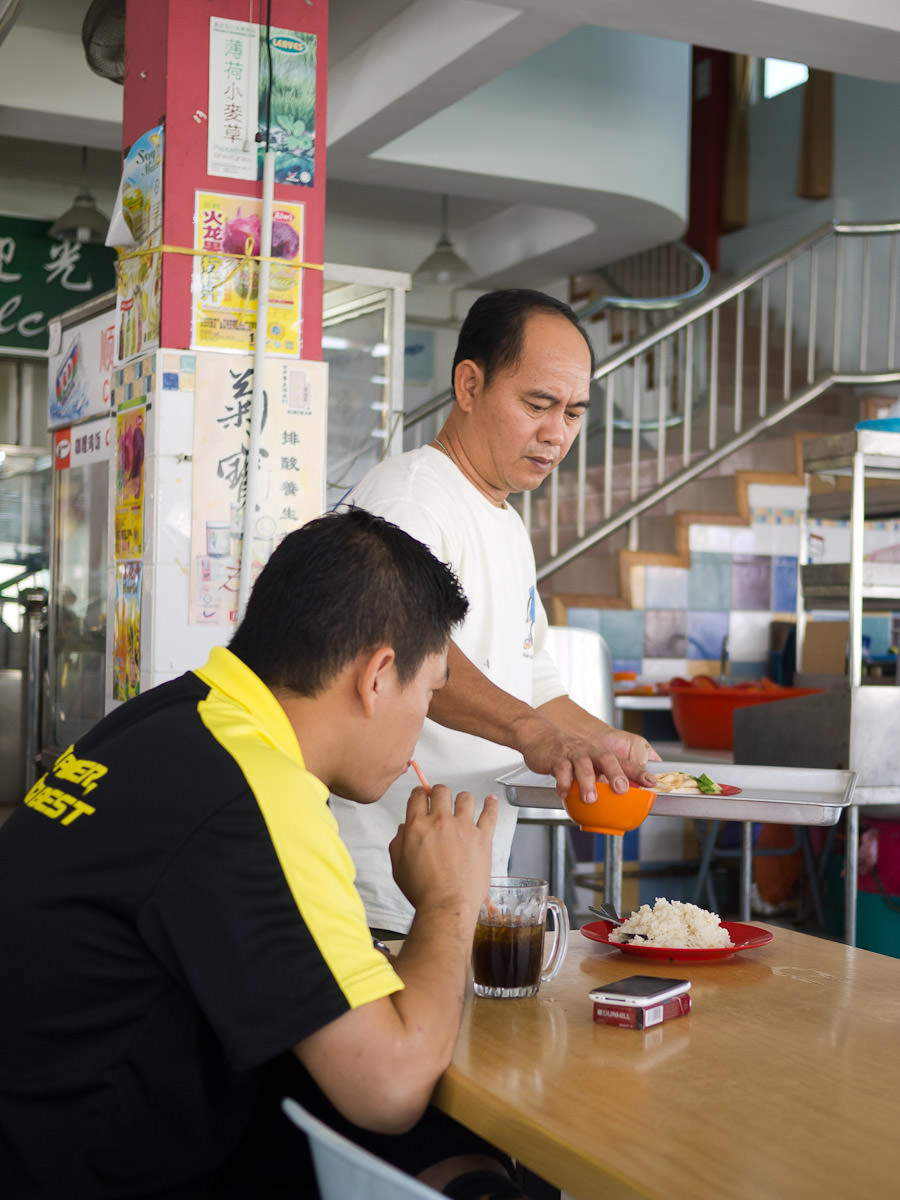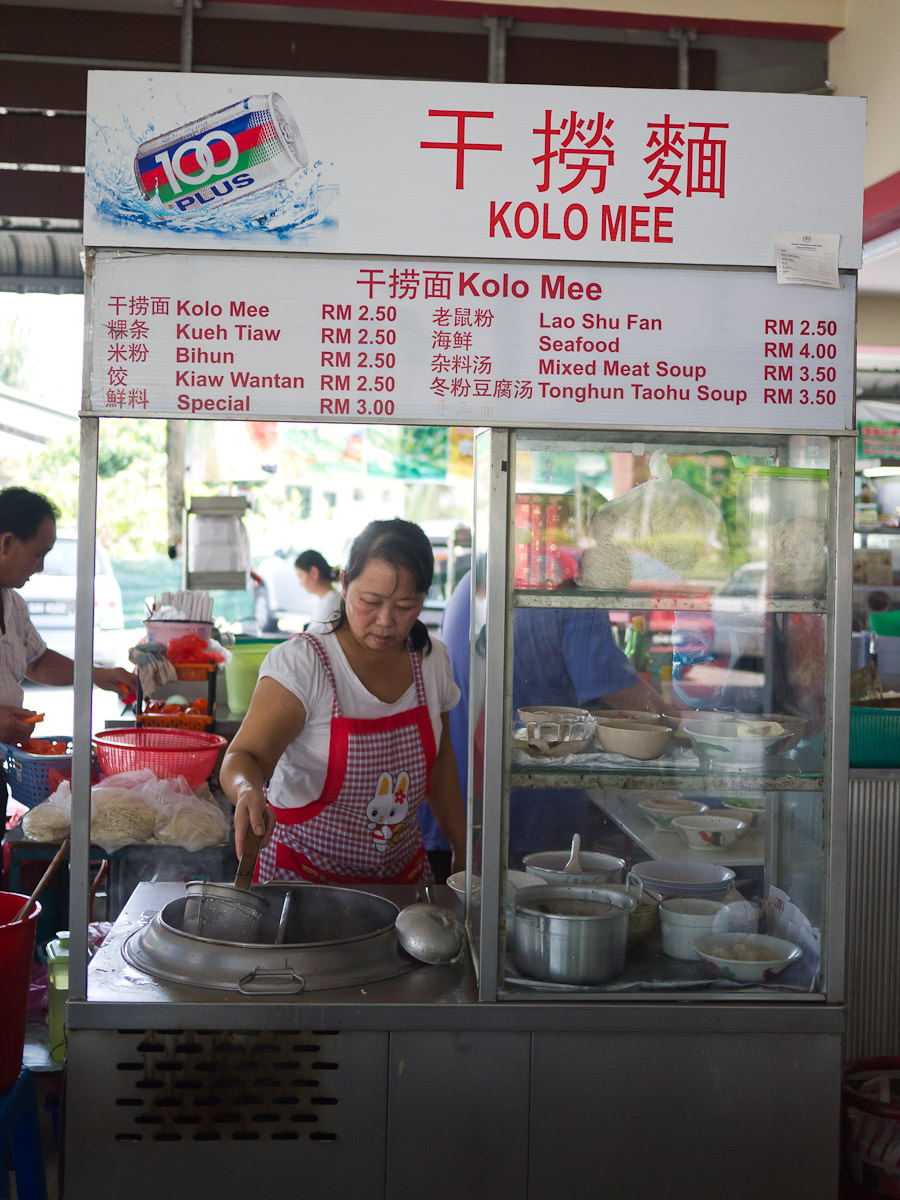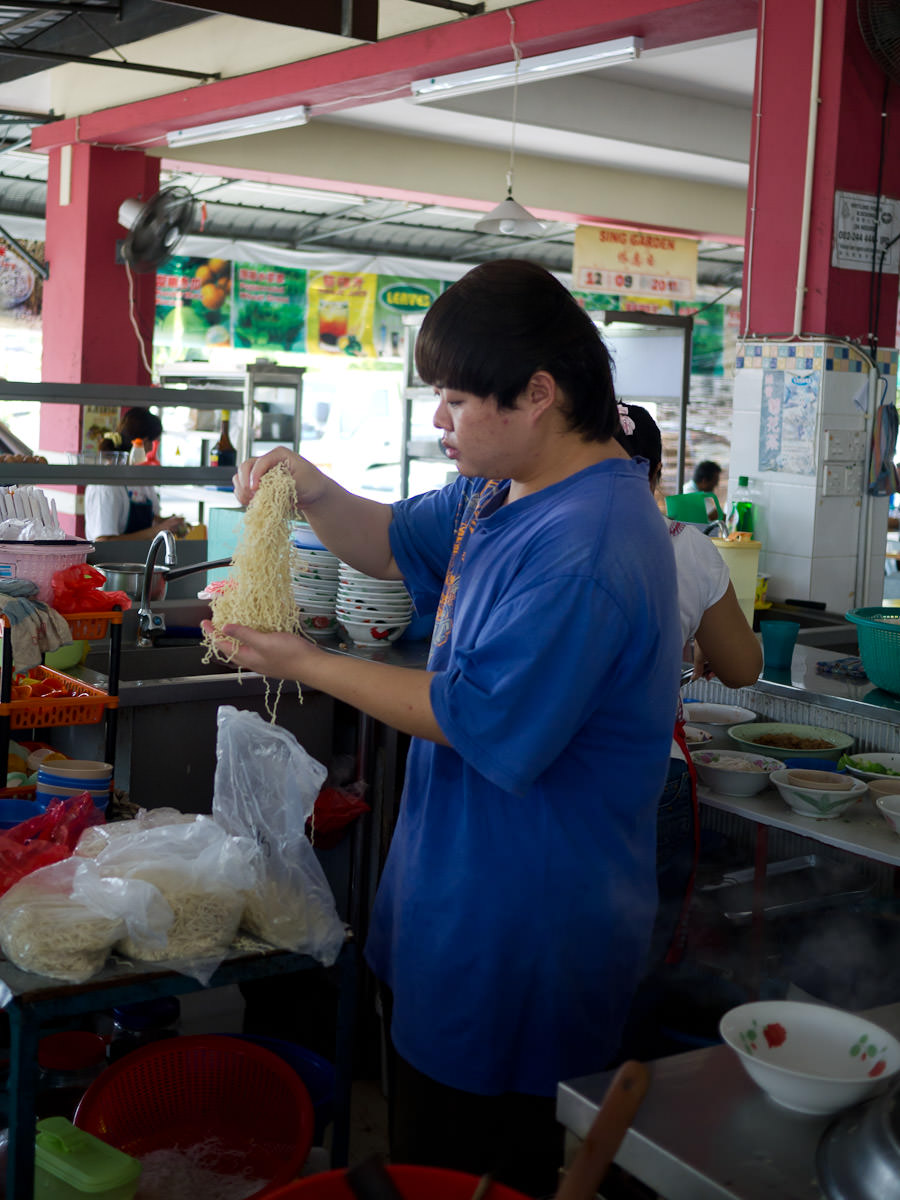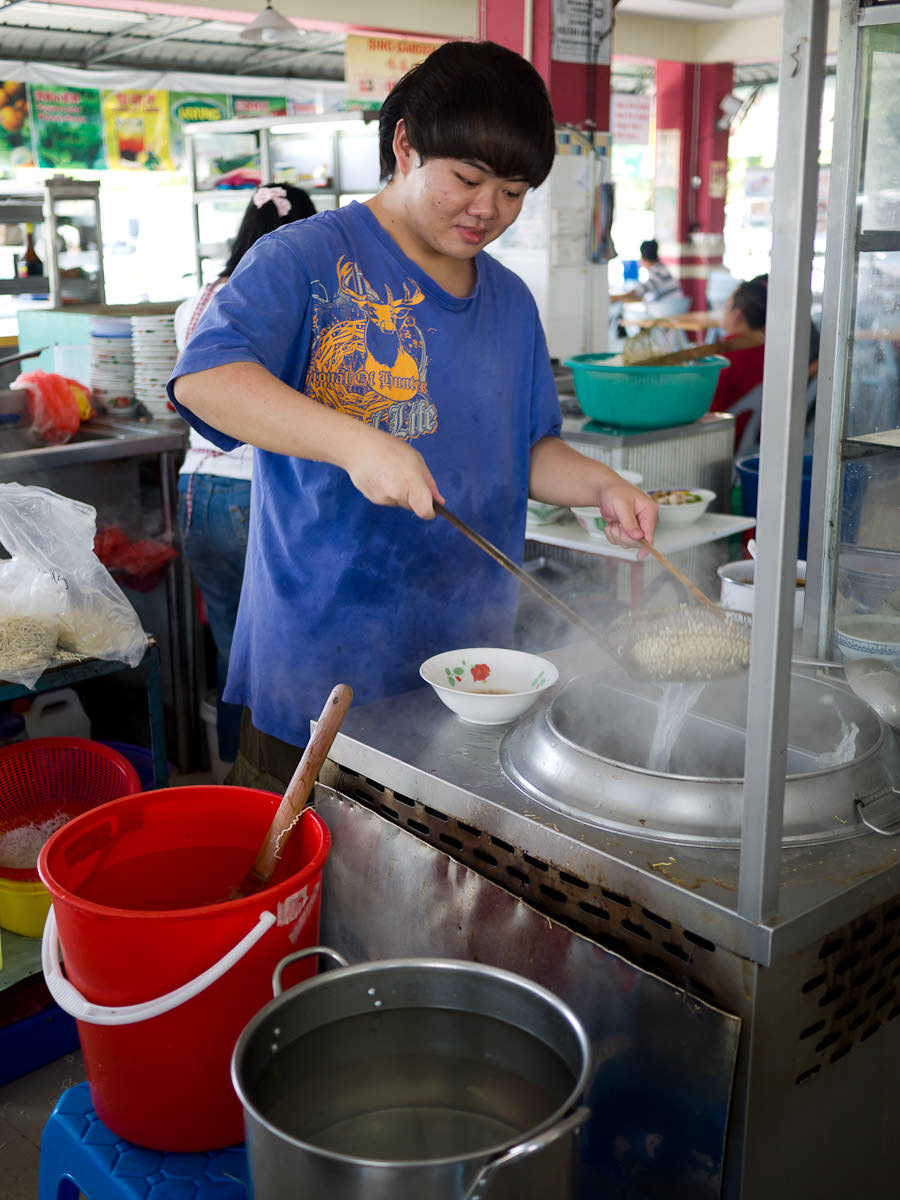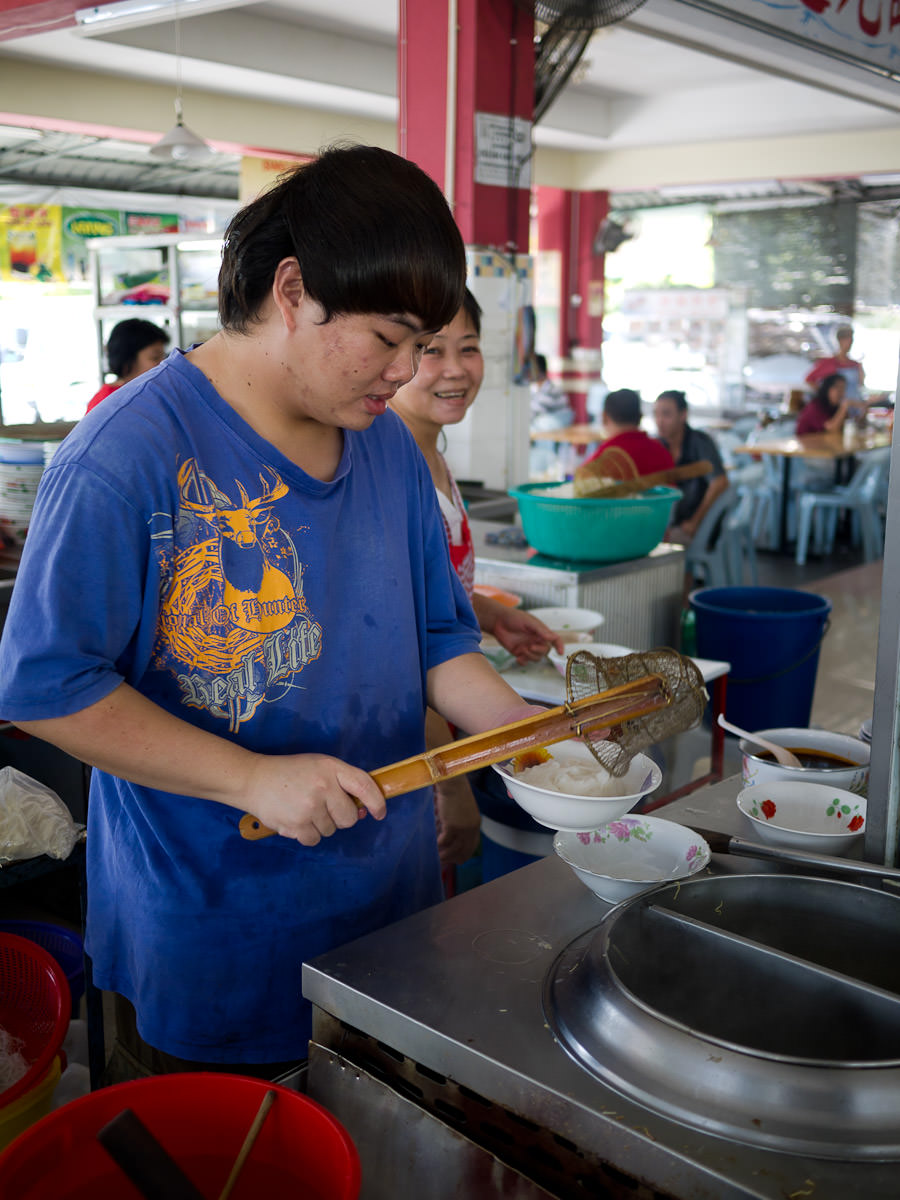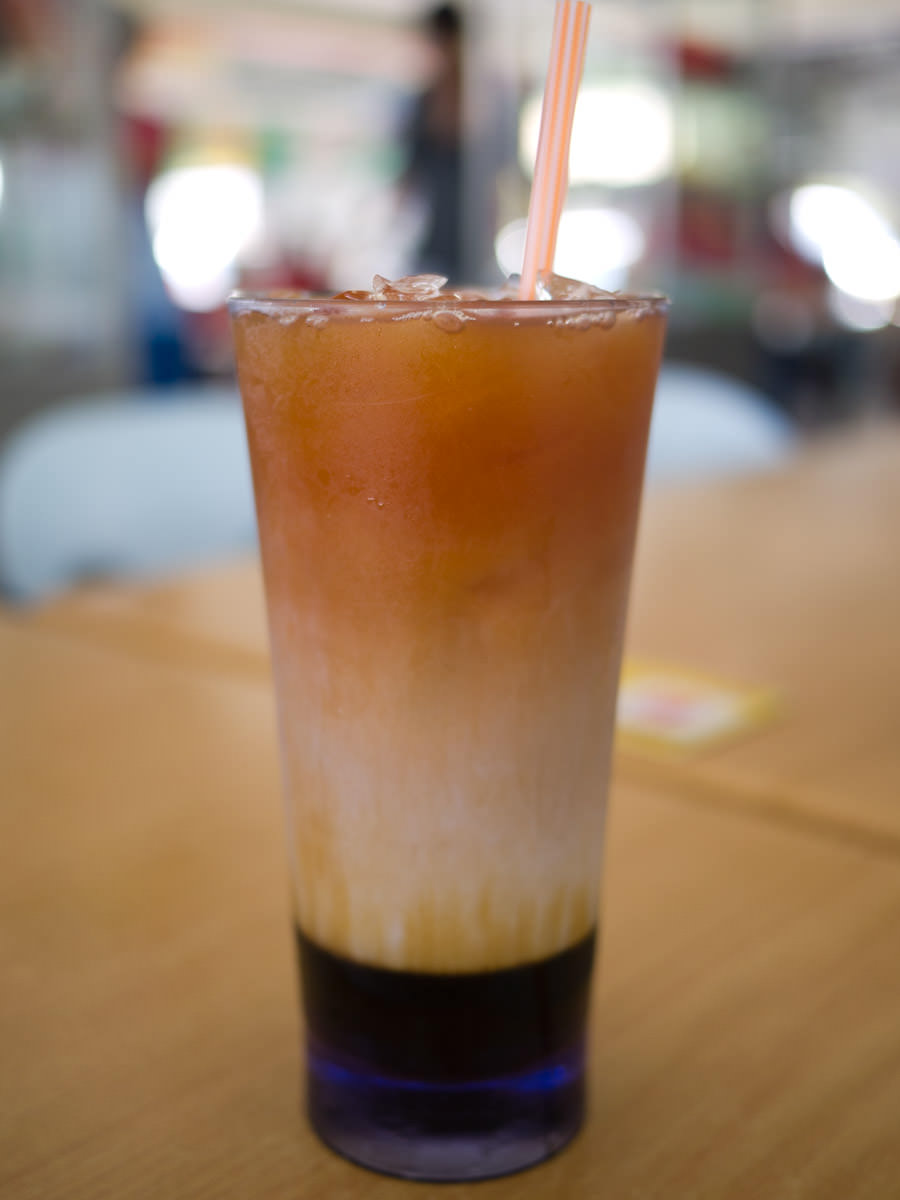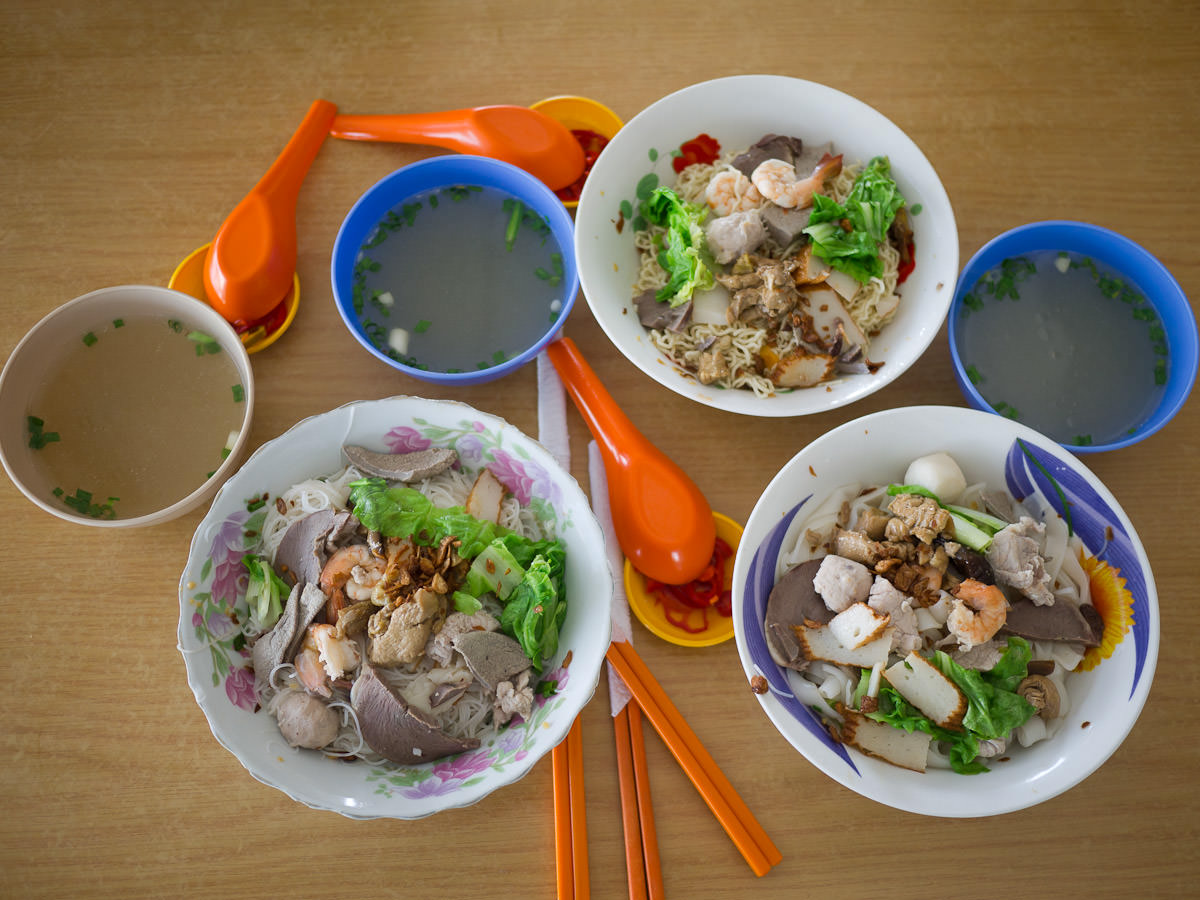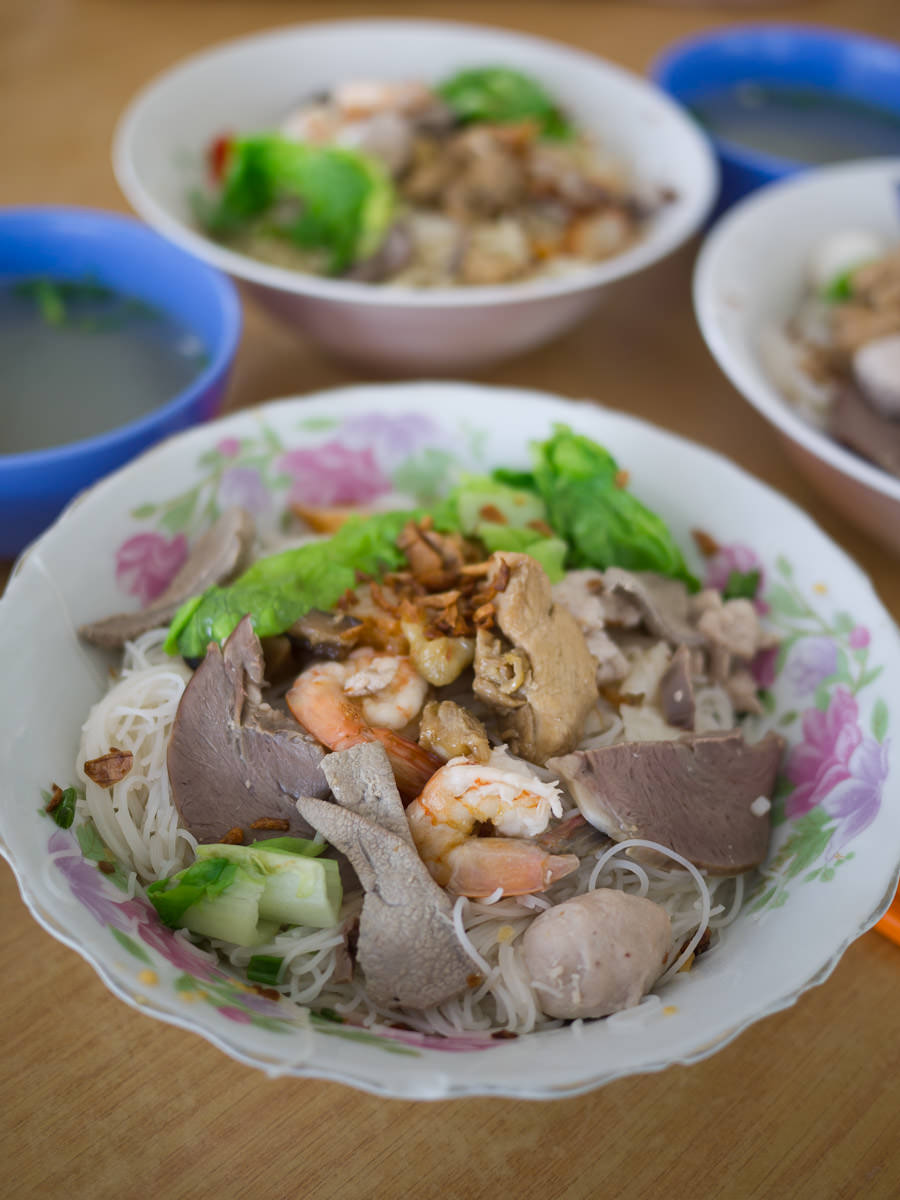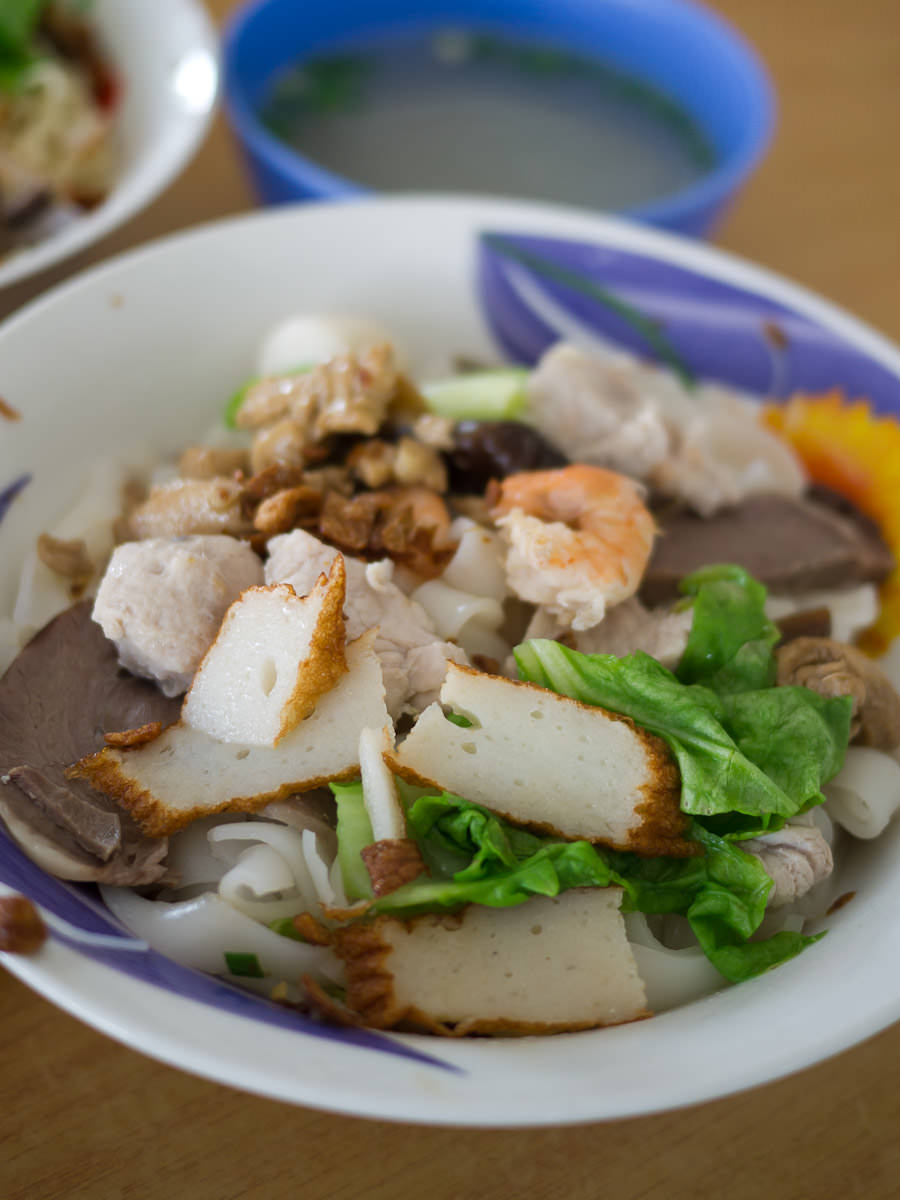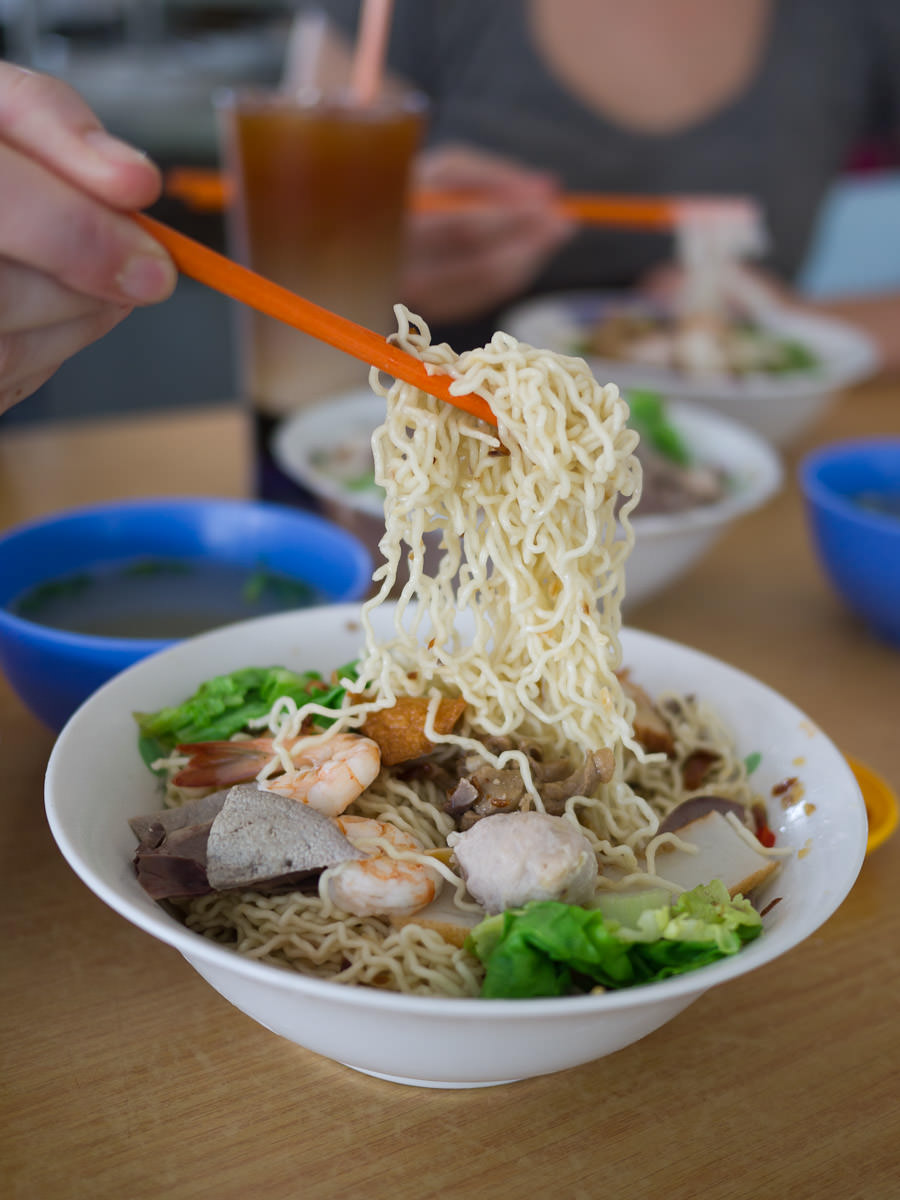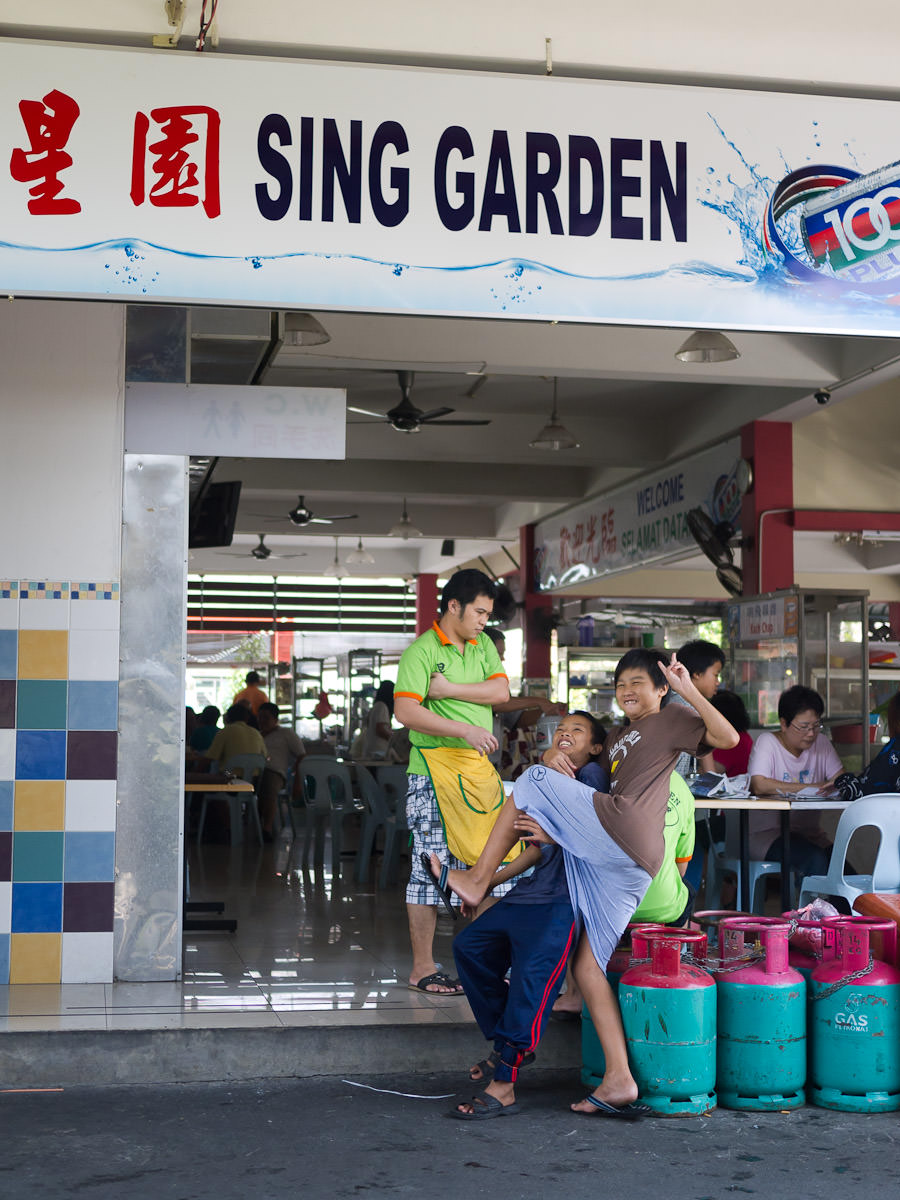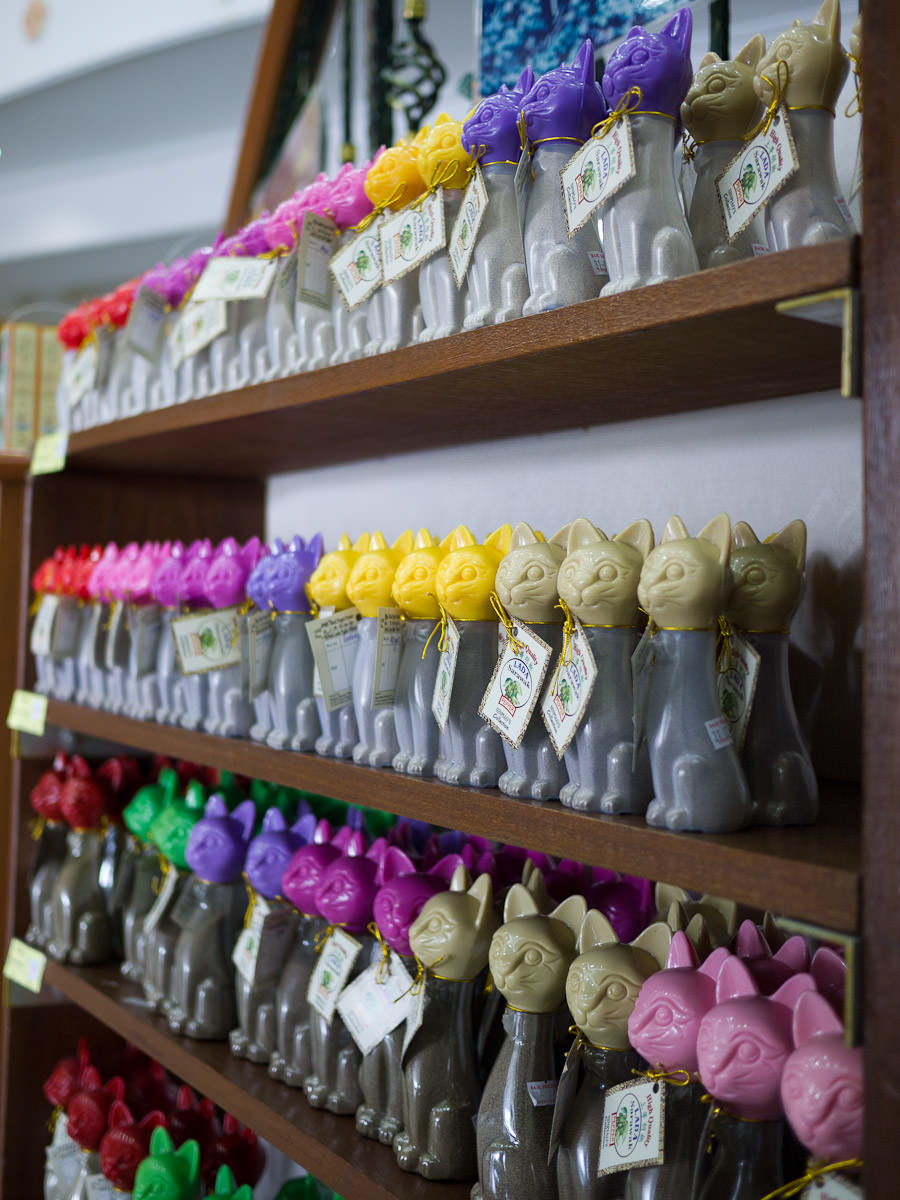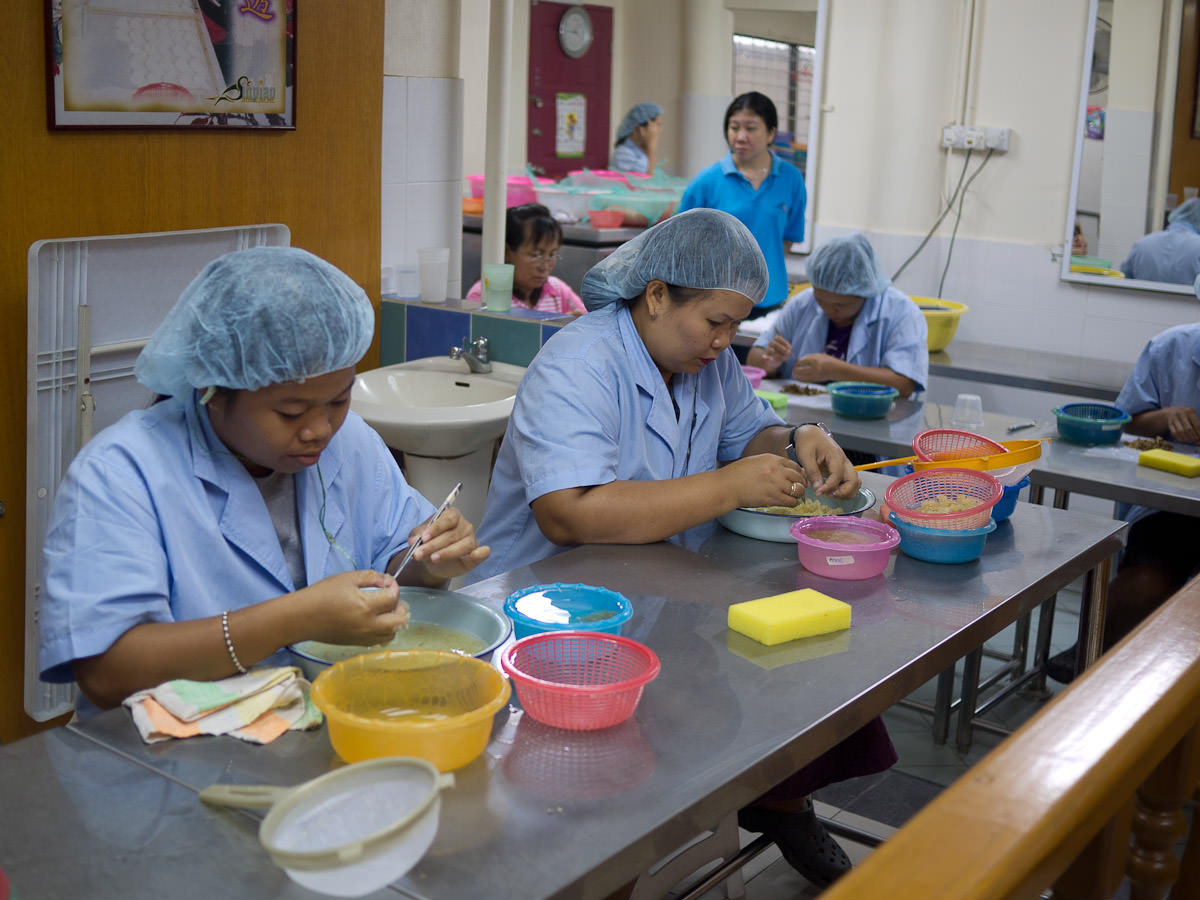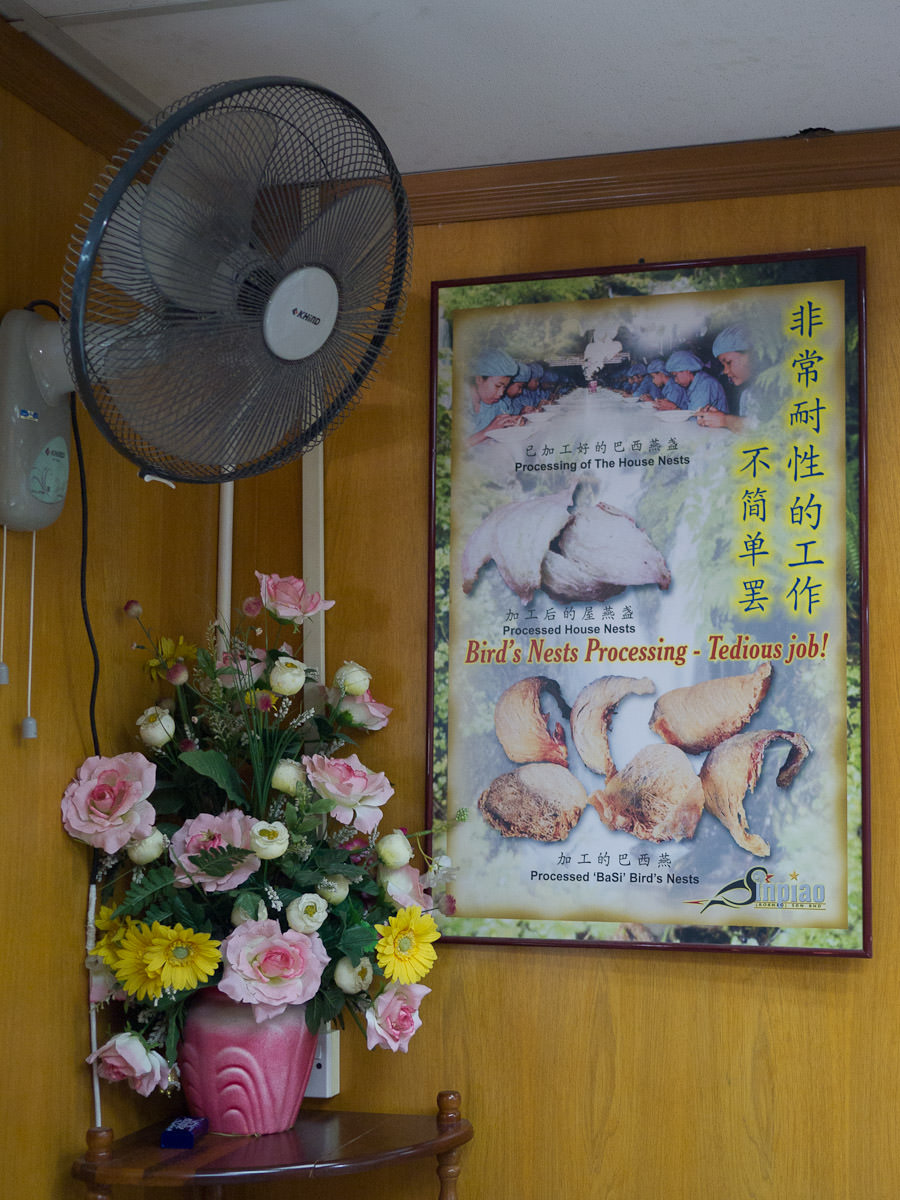Orangutans, kolo mee and bird’s nest, Kuching
After breakfast at our hotel, we begin our action-packed final day in Kuching with a trip to see the orangutans at Semenggoh Wildlife Centre, around 24km outside of Kuching.
As our mini bus pulls into the centre car park, we get ready to enter the nature reserve, hurriedly slapping on more sunscreen and plenty of mosquito repellent.
The Semenggoh Wildlife Centre was established in 1975, set up to rehabilitate wild animals that have been injured, orphaned in the wild, or handicapped through prolonged captivity, with the aim to release them back into the wild. The Orangutan Rehabilitation Program has seen the centre become a haven for many orangutans, including babies born in the wild to rehabilitated mothers. With this visit, we’ll have the chance to see orangutans in their natural habitat.
It’s so warm and humid in the nature reserve, for the first few minutes I’m battling with a camera lens that won’t stop fogging up. Thankfully, my camera acclimatises just before the action starts.
At feeding time, we all gather at a safe distance while a warden brings buckets of fruit and bottles of milk to a feeding platform.
For the next few minutes, we wait.
Then, a flash of excitement as we see a blur of movement high above us and hear the swish of leaves and branches. Orangutans emerge from deep within the forest, swinging effortlessly through the trees and on guide ropes as they come for the food and drink.
After feasting on fruit, some of the orangutans are quite content to (literally) hang around and watch us, just like we are watching them.
They look as strong as gymnasts, as agile as acrobats and as graceful as dancers.
I’ve seen orangutans before at Perth Zoo, but these apes are mesmerising to watch as they just do their thing. The orangutans are beautiful creatures, but we stay on our guard throughout. We’ve been told stories of orangutans taking a dislike to visitors and peeing on them, stealing their hats and cameras. There are warnings and instructions to ensure our safety as we enter the nature reserve.
The last orangutans I see are a mother and her baby. Mum orangutan stuffs her mouth with bananas and makes a quick escape back into the privacy of the trees while her baby clings on tight.
I must confess, to begin with, I wasn’t keen to see the orangutans as I had food on my agenda. But I’m surprised how much I’ve enjoyed the experience and I’m glad to have the opportunity to pop some money in the donation box.
Semenggoh Wildlife Centre
Sememggoh Wildlife Reserve (approximately 24km from Kuching)
Telephone: (+6) 082 618 325
Open daily, including Sundays and public holidays
8am to 12.30pm
1.30pm to 5.15pm
Feeding times
9am to 10am
3pm to 4pm
Kolo mee
We head back into town. The group will be going to see how birds nest is processed, but Natalie, Anna and I are keen to taste a Kuching hawker specialty, kolo mee. We split forces with a promise to join the others after our quick ‘snack’ at a food court called Sing Garden.
This kolo mee stall is family-run, with the son as chief kolo mee cook. Dad is busy mixing up the chilli sauce.
The noodles are portioned precisely by hand.
They don’t mind us taking photos while they work, but there are a few bashful grins and giggles.
While our noodles are being prepared, we order glasses of refreshing iced layer tea.
We’ve got kolo mee (thin egg noodles, very much like instant noodles), beehoon (thin rice noodles) and kway teow (flat rice noodles). Each bowl of noodles comes with a small bowl of steaming broth and a dish of fresh cut chillies.
The boiled noodles are mixed with a fragrant seasoned oil, then topped with blanched Chinese greens, prawns, fish cake and mixed meats, including liver.
The springy kolo mee noodles are my favourite. They look like they’ll be bland but believe me, they are not.
None of us are big offal fans, but the green veggies, prawns, pork balls (balls of pork meat, not testicles!) and fish cake are great. The noodles are deceptively tasty! We slurp on noodles and swap bowls every few mouthfuls.
Bird’s nest processing
Across the way from Sing Garden is a shop that sells Sarawak pepper products (including pepper lollies – and there are free samples!), bird’s nest, clothes and souvenirs (sorry, I didn’t get the name of the shop).
Towards the back of the shop, birds’ nests are painstakingly processed by hand.
Bird’s nest soup is a Chinese delicacy, made from the nests of swiftlets, built in caves by these little birds using their saliva. We saw swiflet nests in Fairy Cave and Wind Cave.
The nests are harvested from caves and then processed to make the product used in bird’s nest soup.
We humans are funny creatures, aren’t we? At some point someone decided to crack open chicken eggs, cook and eat them; someone decided to squeeze a cow’s teats and drink the milk that squirted out; and someone decided to collect nests made from bird saliva and make them into soup. Yes, bird’s nest soup is made from bird saliva. Interestingly, bird’s nest is among the most expensive animal products consumed by humans, among lofty company including beluga caviar, saffron and truffles. Many believe that bird’s nest has medicinal and aphrodisiac properties.
We watch as bits of feather and other debris are plucked from the bits of hardened bird saliva.
Since we’re there and want to give everything a go, Natalie and I share a serving of bird’s nest soup with sugar (RM10). It doesn’t have much of a flavour – it tastes mostly like sugar water to me. But bird’s nest is distinctly present – with every sip, there are little gelatinous chewy pieces of bird’s nest. Before this, I knew that bird’s nest soup was made from bird saliva, but I guess I didn’t think about that too closely until now – and believe me, it helps not to think about bird saliva while you’re drinking bird’s nest soup. :) I don’t think I’ll be rushing to eat bird’s nest again, but in the name of great adventures in eating, I’m glad I got to try it.
[poll id=”22″]
We meet up with the rest of our group and then it’s back on the bus as we return to the hotel for a cooking demonstration with the executive chef…
TFP visited Kuching, Malaysia in September 2011 as a guest of Malaysia Kitchen, MATRADE and Tourism Malaysia. I won a place on this trip as part of the Malaysia Kitchen Blogger Summit.
Read the posts in my Kuching Trip 2011 series
By popular demand, I’ve put together a page about Perth Malaysian restaurants. Please don’t feel outraged if I appear to have missed your favourite Malaysian restaurant. It isn’t intended to be a comprehensive guide, nor do I claim to know all of Perth’s Malaysian restaurants! If you know of any great Malaysian restaurants in Perth I should try, feel free to leave a comment and tell me about them. I’ll keep updating the page.
